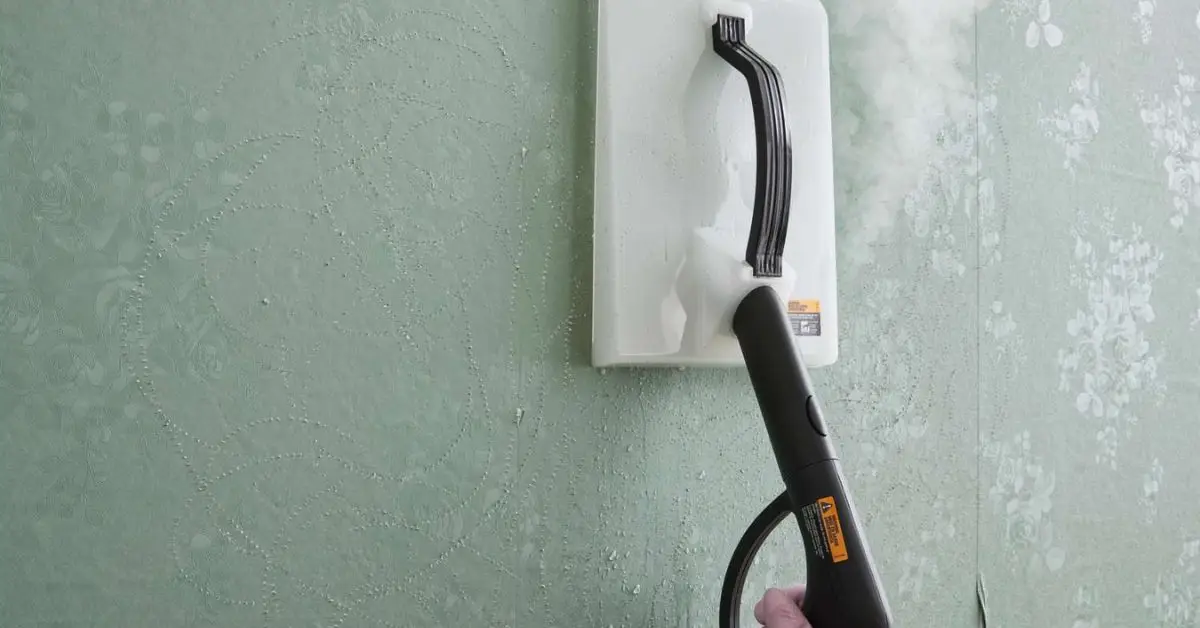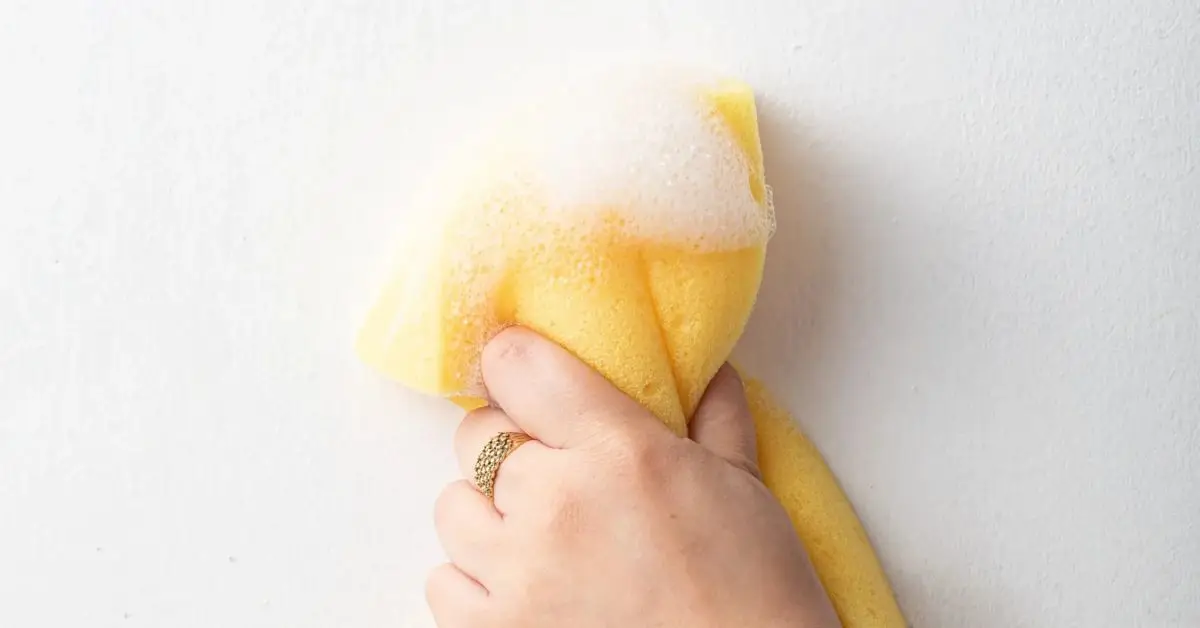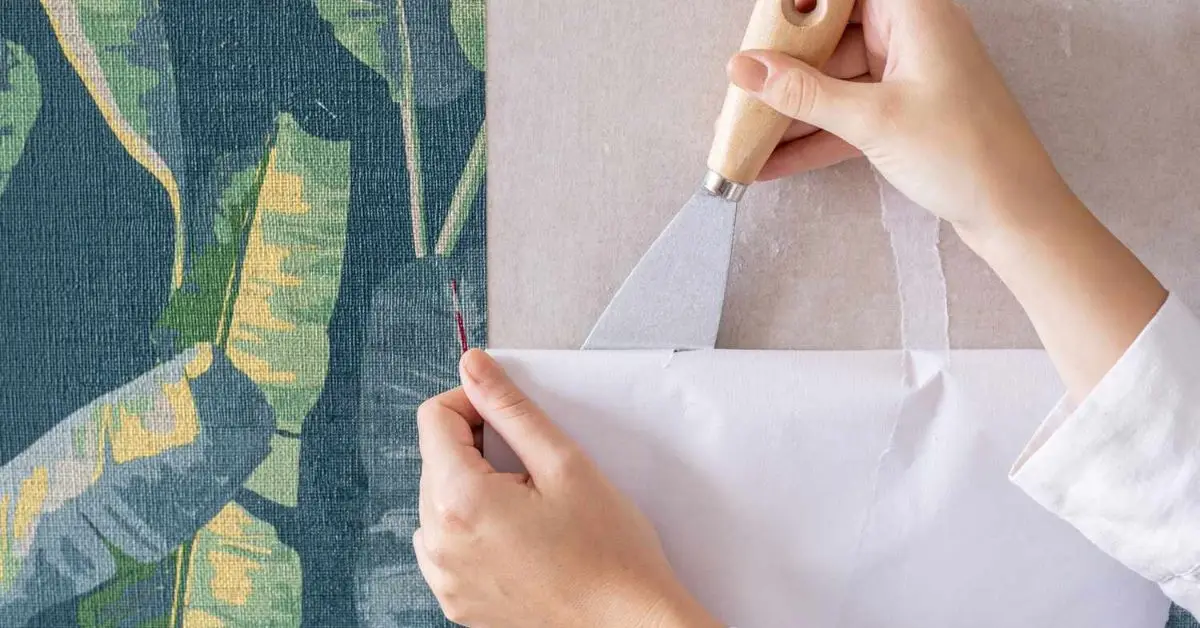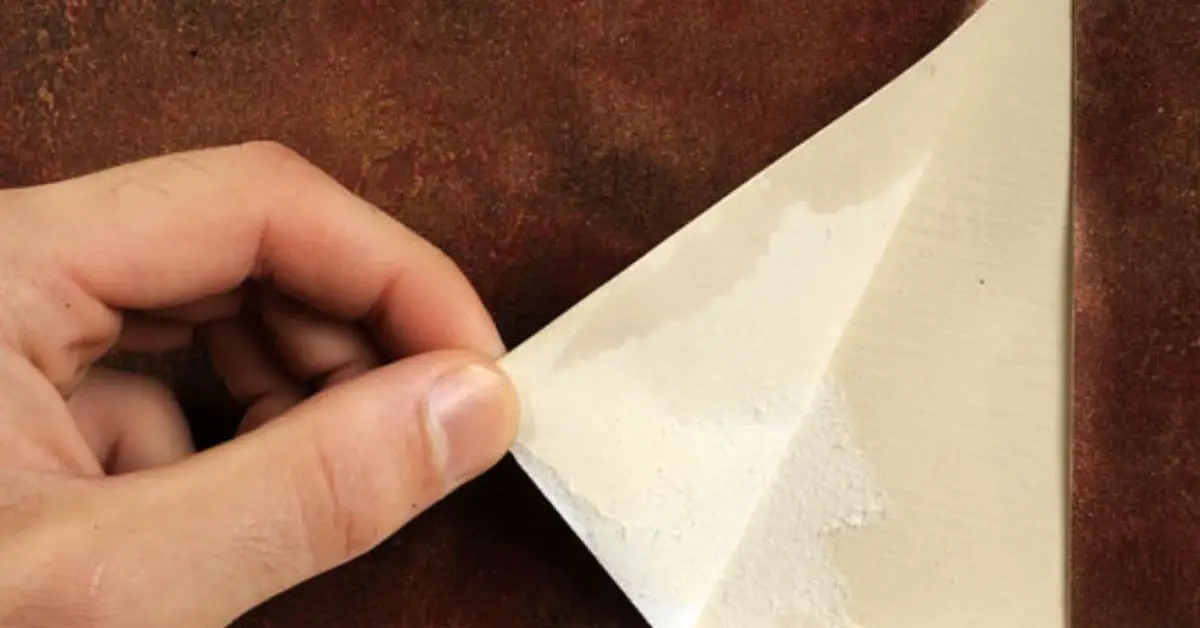Want to Remove Wallpaper Without Wrecking Your Walls or Weekend? Here’s How I Did It in Under an Hour
I’ll be honest — I used to think removing wallpaper was one of those slow, messy home projects that drags on for days. Peeling, scraping, soaking… only to realize you’re also peeling half the wall with it.
But after doing it myself (twice), and talking to other DIYers, I figured out what most online guides skip: if you use the right method for your wallpaper type, and keep your tools simple, you can get it done fast. Like, less-than-an-hour fast. No fancy gadgets. No drywall damage.
This guide is exactly what I wish I had the first time — four proven methods that actually work, cost under $50, and won’t turn your Saturday into a nightmare.
Each one’s designed for a different type of wall and glue situation. I’ll walk you through how to figure out what you’re dealing with, which method to pick, and the tools you’ll need (probably already in your house).
If you’re renting, remodeling, or just over that dated floral print — let’s get that wall back to smooth in one clean sweep.
One of these hacks smells like lavender and costs less than lunch. Stick around.
Know What You’re Dealing With — Identify Your Wallpaper Type
Before you spray, steam, or scrape anything, stop and figure out what kind of wallpaper you’re dealing with. This step alone can save your walls — and your weekend.
The wrong removal method on the wrong wallpaper type is how people end up with torn drywall, leftover glue patches, or worse: having to redo the whole room.
Here’s how to test it:
- Try peeling a corner with your fingernail or plastic scraper. If it lifts easily in sheets, it’s likely peelable.
- If it resists, spray a small patch with warm water and wait a minute. If the water soaks in, it’s likely paper-based. If it beads up, you’re probably dealing with vinyl or washable wallpaper.
Most wallpapers fall into one of these categories:
- Peelable: Top layer comes off easily; backing might stay on the wall.
- Strippable: Removes in one piece without water or steam.
- Traditional glue-based: Often found in older homes; needs water or steam to break down.
- Vinyl or washable: Has a water-resistant surface — harder to remove without scoring.
Each type responds differently to tools, heat, or moisture. Knowing this upfront helps you pick the right method (and avoid wasting time or money on the wrong one).
Pro tip: If the wallpaper has been painted over, it’ll be more stubborn to remove — steam or scoring is usually the way to go.
Method #1 – The Steaming Hack (Fastest for Heavy‑Duty Wallpaper)
If you’ve got old, stubborn wallpaper or multiple layers, this is your fastest and cleanest option — especially in older homes where glue has set deep into the wall.

A basic wallpaper steamer gets the job done without chemicals. You can buy one for around $40, or rent it from a hardware store for even less. I used the Wagner 725 — it heats up fast and has a wide steam plate that covers more surface area without leaving residue.
Here’s how it works:
- Prep your area: Lay drop cloths, shut off electricity near outlets, and score the wallpaper if it’s vinyl or glossy.
- Fill the steamer with water and let it heat up (usually takes 5–10 mins).
- Apply steam in small sections (10–15 seconds at a time).
- Scrape gently with a plastic scraper as soon as the wallpaper softens.
- Wipe down the wall with warm water after you’re done.
Important: Don’t over-steam one spot — the drywall underneath can bubble or tear. Keep moving and work in manageable zones.
Method #2 – The Scoring + Soapy Water Technique (Best for Vinyl or Glossy Walls)
If you’re working with vinyl wallpaper or anything that’s glossy and water-resistant, a steamer alone won’t cut it. That surface needs to be opened up — and this combo of scoring tool + hot soapy water is the cheapest and most effective way to do it.

Here’s what you’ll need:
- A basic scoring tool (around $10)
- Hot water + dish soap
- A spray bottle or sponge
- A plastic scraper or putty knife
How to do it:
- Score the wallpaper lightly in circular motions — just enough to break the surface. Don’t dig deep.
- Spray the wall generously with hot soapy water and wait 10–15 minutes.
- Scrape gently — you’ll notice the glue starting to loosen.
- Wipe down the wall after each section to avoid residue buildup.
Common mistake: People go too hard with the scoring tool. That can tear the drywall underneath and create more repairs later. Go gentle and let the water do the heavy lifting.
DIYer tip from Reddit: Mix in a splash of vinegar with your water — it helps dissolve glue faster and works especially well on older adhesives.
This method costs almost nothing if you already have dish soap and a spray bottle — and it’s ideal if you’re trying to avoid renting or buying new tools.
Method #3 – Fabric Softener Formula (Smells Nice, Works Well)
If you’re renting or just hate the idea of chemicals and strong odors, this one’s for you. It’s gentle, effective, and your room will smell amazing while you work.
The mix:
- 1 part fabric softener
- 2 parts warm water
- Optional: a few drops of dish soap
Pour it into a spray bottle and follow these steps:
- Spray a generous amount over the wallpaper.
- Wait at least 15 minutes to let it soak through.
- Peel slowly from a corner, and use a scraper if needed.
Pros: Super budget-friendly (around $5 total), no harsh fumes, perfect for small jobs or one-room makeovers.
Cons: Not great for painted-over wallpaper or multiple layers — you may still need a scoring tool or steamer.
Method #4 – All-in-One Wallpaper Removal Kits (Fastest for Beginners)
If this is your first time removing wallpaper, the last thing you want is to gather a bunch of random tools and hope for the best. That’s where all-in-one kits come in — they’re made for beginners who want a clear, simple process without extra decisions.

Most kits include:
- A scoring tool
- A spray-on solution to loosen adhesive
- A plastic scraper
- Step-by-step instructions anyone can follow
You’ll find popular kits like Zinsser’s or DIF available for under $50 — and they actually work. In fact, in a hands-on review by This Old House, the Zinsser kit removed stubborn wallpaper about 30% faster than basic soap and water.
What makes these kits efficient isn’t just the tools — it’s the solution. It’s formulated to break down glue quickly without damaging the wall underneath.
Heads-up for beginners: One common mistake is not letting the solution sit long enough. Give it 10–15 minutes to soak in after spraying — it makes the scraping so much easier and prevents wall damage.
If you want a plug-and-play option that saves time, reduces frustration, and keeps things simple, this is hands-down the fastest way to go.
What Most DIYers Miss – Prepping Your Wall Before & After Removal
Let’s be honest — most people jump straight into tearing wallpaper off the wall. I’ve been guilty of that too.
But here’s the truth: if you don’t prep your space beforehand, or skip the post-removal cleanup, you’re setting yourself up for a mess. Uneven paint, leftover glue bleeding through, or even fresh wallpaper peeling off within weeks — it all comes from skipping this step.
Before You Start: Protect and Prepare
- Lay down drop cloths or plastic sheets to protect floors
- Turn off power to nearby outlets if you’re using steam or liquid
- Remove switch plates, cover furniture, and tape baseboards. If you’re refreshing wallpaper in an entryway or hallway, it’s a great time to also fix entryway design mistakes that might be spoiling your home’s first impression.
- Have a trash bag nearby — the peeled wallpaper adds up quickly
After Wallpaper Comes Off: Clean and Repair
- Use a sponge with warm water to wipe away glue residue
- If you see wall damage, fill it in with joint compound and sand it smooth once dry
- Let the walls dry out completely — moisture left behind is a silent problem
- Planning to paint or re-paper? Apply a wall sealer/primer so your next layer sticks cleanly and evenly
Pro tip: Even if your wall looks “clean,” leftover adhesive can mess with paint or wallpaper paste. Always do a hand test — if it feels tacky, there’s still glue.
This step is massively under-covered in most how-to articles. But honestly? It’s what separates a clean, professional-looking finish from a patchy, bubbling disaster.
Take the extra 20–30 minutes — your wall will thank you.
Budget Breakdown – What You Can Do for $25, $35, and $50
Let’s face it — most DIY decisions start with, “Kitna kharcha aayega?”
And since wallpaper removal isn’t something you do every day, you don’t want to overspend on tools you’ll never use again. That’s why I’ve broken this down into realistic budget tiers — so you can get the job done based on how much you’re comfortable spending. And while you’re already in DIY mode, you can also bug-proof your windows to keep your home cooler and critter-free this summer.
If You’ve Got $25
Go with the soapy water + scraper method.
- Basic scraper ($5–10)
- Dish soap or white vinegar
- Sponge and spray bottle
It’s the cheapest method — slow but effective, especially for thin or partially peeling wallpaper.
If You Can Stretch to $35
Add a wallpaper scorer and try the fabric softener + warm water mix.
- Scorer tool ($10–12)
- Fabric softener ($5–8)
- Warm water spray
It smells better, softens glue faster, and works well on strippable wallpaper. Great for renters or lighter wallpaper jobs.
If You Can Spend $50
Go for an all-in-one removal kit or rent a steamer from Lowe’s or Home Depot.
- Kits like Zinsser include everything you need
- Steamer rentals usually run around $30 for 4 hours
Best for stubborn wallpaper, multiple layers, or older glue types. Worth it if you want results fast with minimal effort.
Pro tip: If this is a one-time job, renting a steamer instead of buying one can save you money without compromising on speed or quality.
What NOT to Do (Mistakes That Can Cost You More Later)
Here’s where a lot of DIYers — even seasoned ones — mess up. And trust me, these mistakes can ruin your wall, blow your budget, or both.
Avoid these common slip-ups:
Don’t yank wallpaper off dry

It’s tempting, but pulling without softening the glue almost always leads to drywall damage — especially with traditional glue wallpaper.
Don’t skip the test patch
Every wall is different. Before going full force, test your method on a small corner — it’ll tell you how much soak time you need, or if you need a different method altogether.
Don’t reuse old scraper blades
Dull blades tear paper unevenly and dig into your drywall. Always use a fresh, clean edge to keep the job clean and your wall intact.
Don’t forget ventilation
If you’re using any chemical-based solution (including kits), open windows and run a fan. Fumes build up fast in small spaces like bathrooms or hallways.
Best Method by Situation
Not everyone reads every word — and that’s okay. If you’re skimming or trying to make a fast decision, here’s a simple cheat sheet that shows which wallpaper removal method fits your situation best:
| Situation | Best Method | Cost | Time |
|---|---|---|---|
| Thick wallpaper, old house | Steamer | $45 | 45–60 min |
| Vinyl or glossy wall | Scoring + Soapy Water | $25 | 50–60 min |
| Renter-friendly, no chemicals | Fabric Softener Mix | $15 | 45 min |
| Beginner DIY (wants all tools) | All-in-One Kit | $50 | 60 min |
Conclusion: Choose Smart, Act Fast — And Keep Your Walls Happy
If you’ve made it this far, you already know more than 90% of people Googling “how to remove wallpaper.”
The biggest takeaway? It’s not about effort — it’s about method.
- Start by identifying what kind of wallpaper you’re dealing with
- Pick the removal technique that suits your tools and wall condition
- Don’t skip the prep or clean-up — it’s what makes the difference between a smooth finish and a future repair job
None of these methods require fancy gadgets or a contractor-level budget. You just need the right approach, a little patience, and a plan that fits your wall. Once your walls are clean and refreshed, you can even rethink your decor — including where and how to place wall clocks and their placement based on Vastu tips.
Tried removing wallpaper before? Drop your method (or horror story) in the comments — it might just help someone else figure out what not to do.
Looking for more budget DIY tricks? Visit Build Like New for more practical guides, smart home fixes, and affordable renovation ideas — all tested, real, and beginner-friendly.
Disclaimer: The methods and tips shared in this article are based on personal experience, user-submitted hacks, and publicly available product recommendations. Results may vary depending on your wallpaper type, wall condition, and tools used. Always test any removal technique on a small area first. Build Like New is not liable for any accidental damage or misuse of products. When in doubt, consult a professional.


